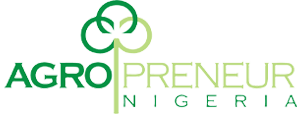In today’s competitive agribusiness landscape, food quality has become more than a value-add . it’s a currency.
From local farms to global markets, buyers, governments, and consumers are aligning their trust and purchasing power with verifiable standards. Whether you’re a farmer, processor, or exporter, demonstrating consistent quality and safety is now essential for market access.
The Rise of the Quality-First Consumer
Modern consumers aren’t just buying food they’re buying confidence.
According to a 2023 McKinsey study, over 70% of consumers in developed markets say they’re willing to pay more for food that is certified as safe and sustainably produced.
This shift is reshaping how agribusinesses operate from farm to fork.
Certifications: More Than Just a Stamp
Food certifications like:
GlobalG.A.P.
HACCP
ISO 22000
Organic labeling aren’t just regulatory hoops they are trust signals.
These standards demonstrate compliance with:
Food safety
Traceability
Environmental stewardship
For exporters, they’re often non-negotiable. Many markets (especially the EU and North America) require them. Without these, even high-quality goods can be locked out of international trade.
“Certifications are the new trade passports,” says the FAO.
“They help align local producers with international market requirements.”
Export Readiness: Quality Opens Doors
For agribusinesses aiming for international expansion, food quality is no longer optional . it’s mission-critical.
Countries with strict import rules demand:
- Full transparency in production and handling
- Accurate and compliant labeling
- Verifiable traceability systems
A Costly Example:
In 2022, the European Commission blocked 400+ food shipments due to pesticide or microbiological non-compliance.
For small producers, a single rejection can mean:
- Months of lost revenue
- Reputational damage
- Even market blacklisting
The New Bottom Line
Food quality in agribusiness isn’t just about taste or shelf life anymore.
It’s about:
✅ Trust
✅ Compliance
✅ Market access
Certifications and transparent practices have become the new currency in a global marketplace where safety, sustainability, and credibility are non-negotiable.
What Do You Think?
Would you pay more for certified safe food?
Drop a comment or share your experience with food standards in your region.
References
McKinsey & Company. (2023). The Future of Food: Consumer Priorities and Industry Implications.
Food and Agriculture Organization (FAO). (2021). Certification in Agriculture: Pathways to Trade and Sustainability.
European Commission. (2022). RASFF Annual Report.


